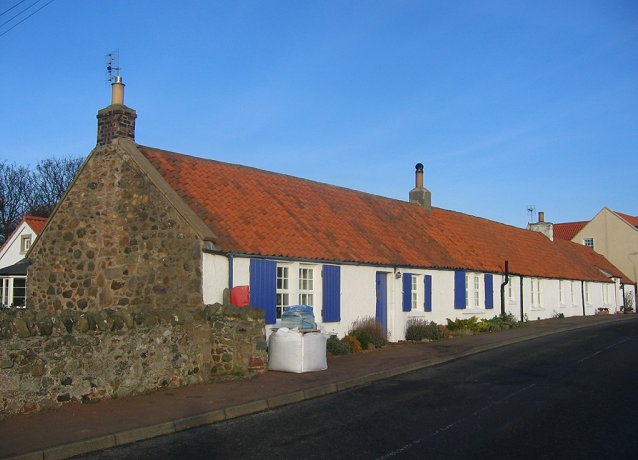Congalton Gardens
Downs, Moorland in East Lothian
Scotland
Congalton Gardens

Congalton Gardens is a picturesque natural reserve located in East Lothian, Scotland. Situated amidst the stunning Downs and Moorland, this area offers visitors a unique and diverse landscape to explore. Spanning over a vast expanse, Congalton Gardens is a haven for nature enthusiasts and outdoor lovers alike.
The gardens are renowned for their remarkable beauty and tranquil atmosphere. The rolling hills of the Downs provide breathtaking panoramic views, while the Moorland adds a touch of rugged charm to the surroundings. The area is rich in flora and fauna, boasting a wide variety of plant species and serving as a habitat for numerous wildlife species.
Visitors to Congalton Gardens have the opportunity to take part in a range of outdoor activities. Walking and hiking trails are scattered throughout the area, offering different levels of difficulty to cater to all abilities. Exploring these trails allows visitors to fully immerse themselves in the natural beauty of the gardens.
For those interested in birdwatching, Congalton Gardens is a haven. The diverse habitats attract a wide range of bird species, making it an ideal spot to observe and identify various birds in their natural habitat.
In addition to its natural beauty, Congalton Gardens also houses a visitor center where visitors can learn more about the local flora and fauna. The center provides educational resources and interactive exhibits that enhance the overall experience and understanding of the gardens.
Overall, Congalton Gardens in East Lothian is a must-visit destination for nature enthusiasts and those seeking to escape the hustle and bustle of daily life. With its stunning Downs, Moorland, and abundance of wildlife, this natural reserve promises a truly unforgettable experience.
If you have any feedback on the listing, please let us know in the comments section below.
Congalton Gardens Images
Images are sourced within 2km of 56.012156/-2.7381058 or Grid Reference NT5480. Thanks to Geograph Open Source API. All images are credited.


Congalton Gardens is located at Grid Ref: NT5480 (Lat: 56.012156, Lng: -2.7381058)
Unitary Authority: East Lothian
Police Authority: The Lothians and Scottish Borders
What 3 Words
///dunk.rentals.fell. Near North Berwick, East Lothian
Nearby Locations
Related Wikis
East Fortune
East Fortune is a village in East Lothian, Scotland, located 2 miles (3 km) north west of East Linton. The area is known for its airfield which was constructed...
East Fortune railway station
East Fortune railway station served the village of East Fortune, East Lothian, Scotland from 1848 to 1970 on the North British Railway Main Line. ��2...
RAF East Fortune
Royal Air Force East Fortune, or more simply RAF East Fortune, is a former Royal Air Force station located just south of the village of East Fortune. It...
National Museum of Flight
The National Museum of Flight is Scotland's national aviation museum, at East Fortune Airfield, just south of the village of East Fortune, Scotland. It...
Kingston, East Lothian
Kingston is a small hamlet near North Berwick in East Lothian, Scotland. Kingston was once known as Kings Seat; historic maps of the area show this....
Waughton Castle
Waughton Castle is a ruined castle, dating from the fourteenth century, about 3 miles (4.8 km) north of East Linton, and 2 miles (3.2 km) west of Whitekirk...
Dirleton railway station
Dirleton railway station was a railway station on the North Berwick Branch of the North British Railway in East Lothian, Scotland. It was an intermediate...
Athelstaneford
Athelstaneford () is a village in East Lothian, Scotland. It lies almost 6 kilometres (3.5 mi) north-east of the market town of Haddington and about 28...
Nearby Amenities
Located within 500m of 56.012156,-2.7381058Have you been to Congalton Gardens?
Leave your review of Congalton Gardens below (or comments, questions and feedback).






















